The rattlesnake plant, or calathea lancifolia, stands out from its fellow calathea due to its elongated, crimped leaves and unmistakable foliage pattern. The long spear-shaped leaves have dark green markings on a light green background, wavy edges, and rich purple undersides.
The rattlesnake plant is a great introduction to the calathea family, because it is a little less temperamental than its cousins. Let’s talk about how to care for a rattlesnake plant!
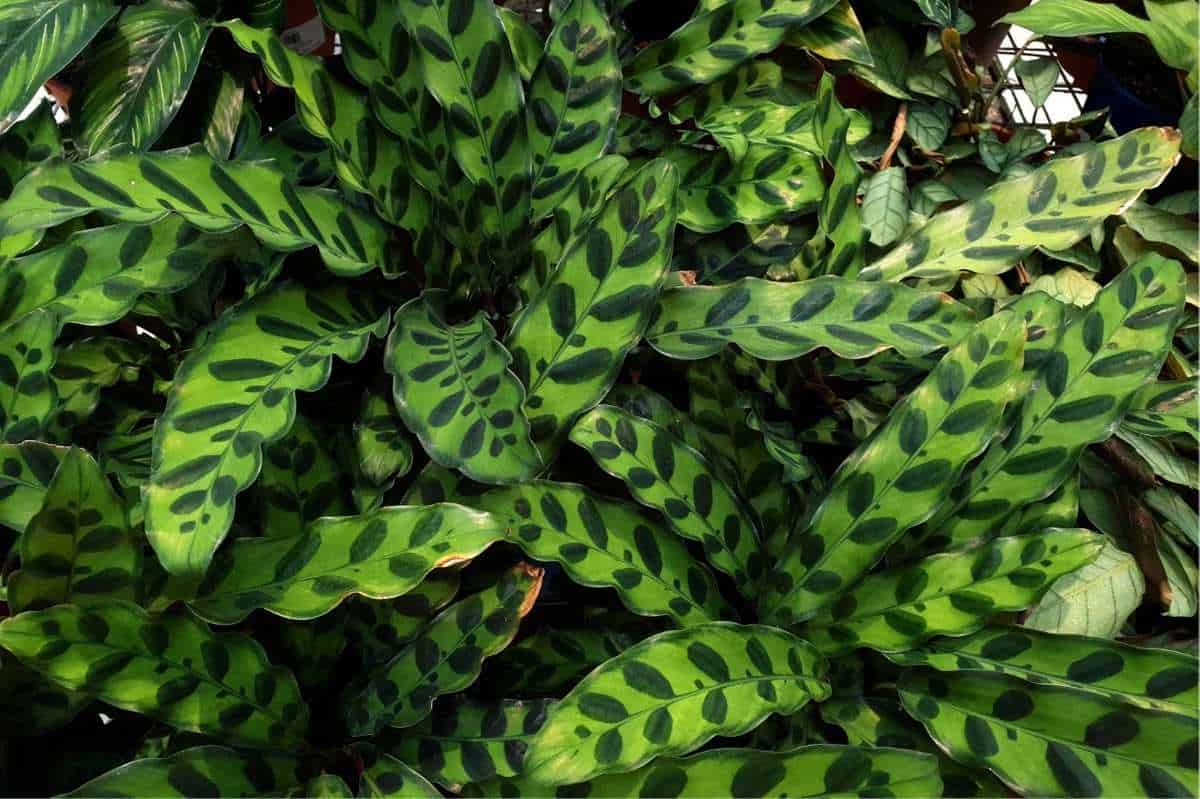
Table of Contents
Is a rattlesnake plant a prayer plant?
Like prayer plants, rattlesnake plants belong to the marantaceae family, but they aren’t technically prayer plants—rattlesnake plants belong to the calathea genus, rather than the maranta genus of prayer plants. However, their care needs are very similar to that of prayer plants, because they both grow in very similar environments. If you know how to take care of one, you’ll be able to take care of the other!
How do you take care of a rattlesnake plant?
Just like with calathea ornata, the closer you can replicate your rattlesnake plant’s natural environment at home, the more your plant will thrive. Native to the rainforests of Brazil, the calathea lancifolia enjoys moist soil and high humidity.
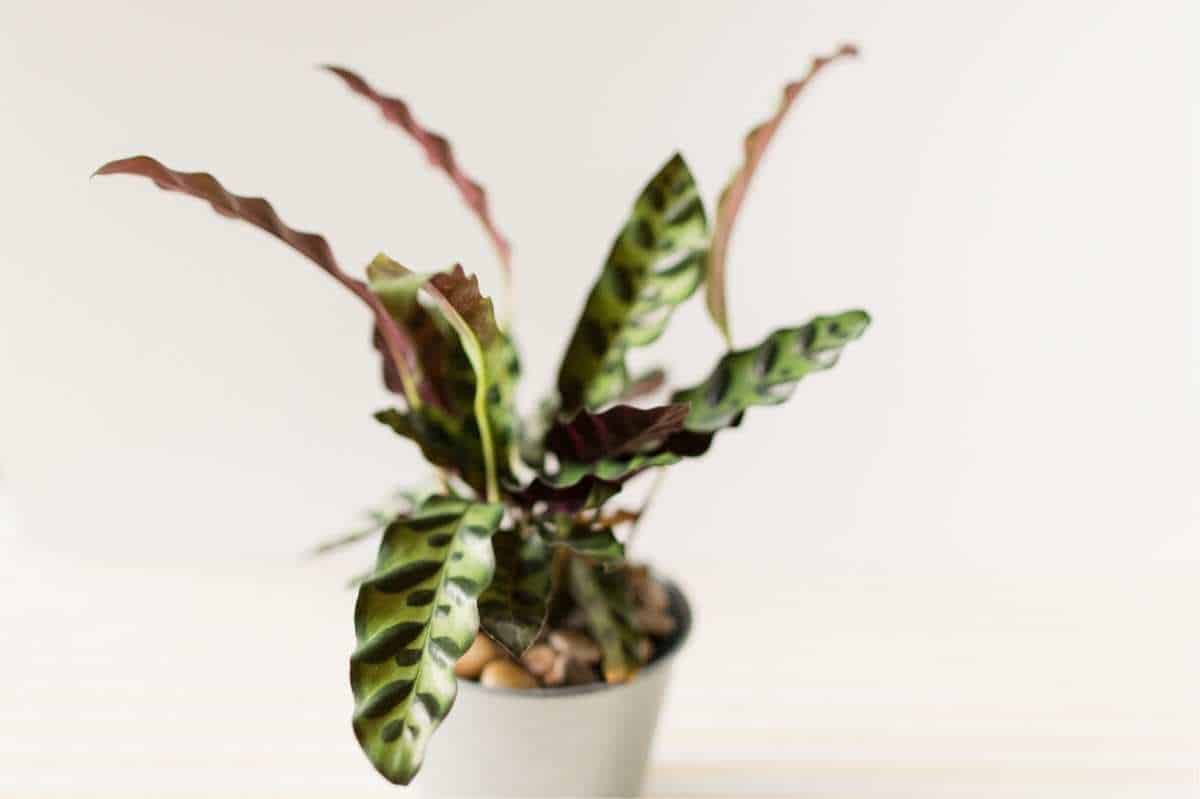
Light
Put your rattlesnake plant’s pot in a spot where it can get bright indirect light. The indirect part is important, as direct sunlight can bleach the foliage and cause leaf burn. Instead, filtered southern light or unfiltered eastern or western sunlight are your best bets.
Humidity
The rainforests of Brazil are very humid, and the dry air in most of our homes doesn’t compare. If you start to notice brown edges on the leaves, your calathea lancifolia needs more humidity. There are lots of ways to boost the humidity around your plants, including setting up a humidifier, filling a tray with pebbles, or clustering your calathea near other plants.
Growfully Protip
Clustering plants is an easy way to give your calathea an extra dose of humidity thanks to transpiration. Transpiration is the process by which plants release water vapor through their leaves, so your plants are lending each other some humidity!
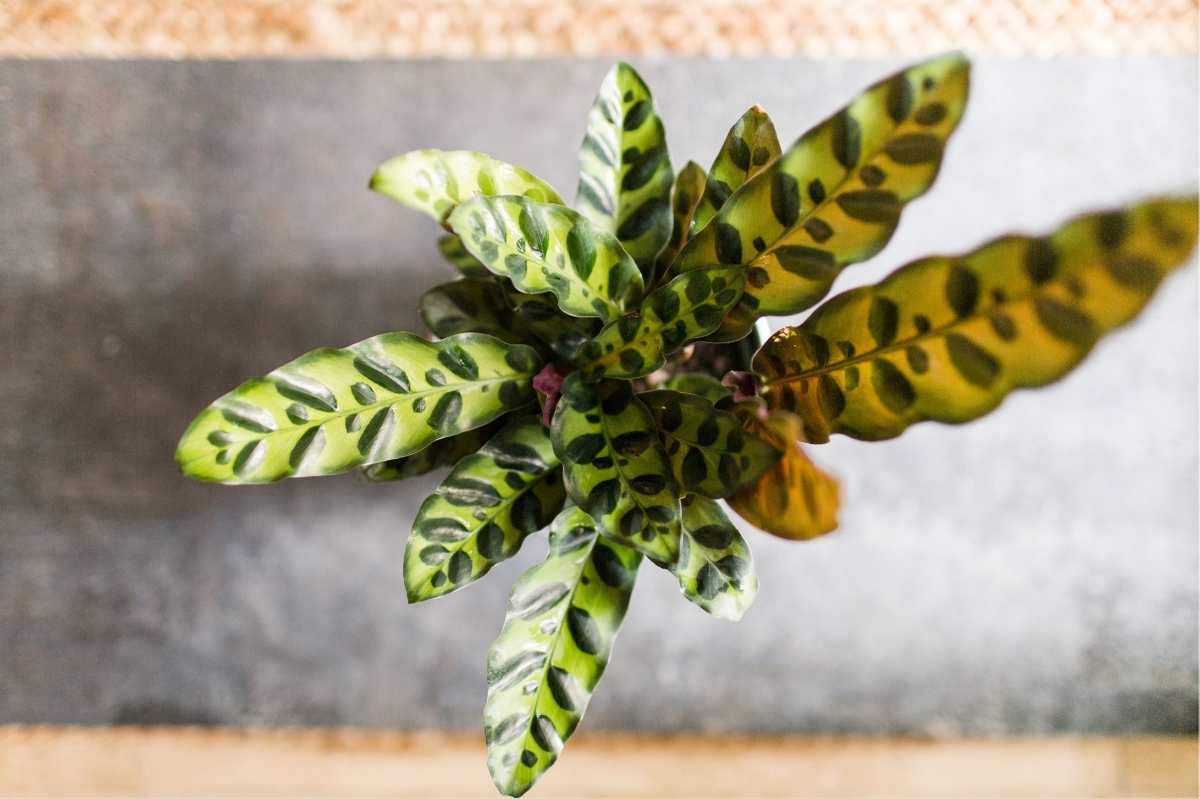
Some people like to mist their rattlesnake plants as a way to raise the humidity. While it only makes a small, very temporary difference, it does dislodge any spider mites or other pests that are trying to make your plant home. Mist away, if it makes you happy!
Water
Like all calathea, this plant likes soil that is consistently damp, but not soggy. Be sure to use a planter with a drainage hole, and use a potting medium that is well-draining.
Growfully Protip
If you are concerned that your potting mix will be too heavy for your rattlesnake plant, try mixing perlite or orchid bark in to your potting soil.
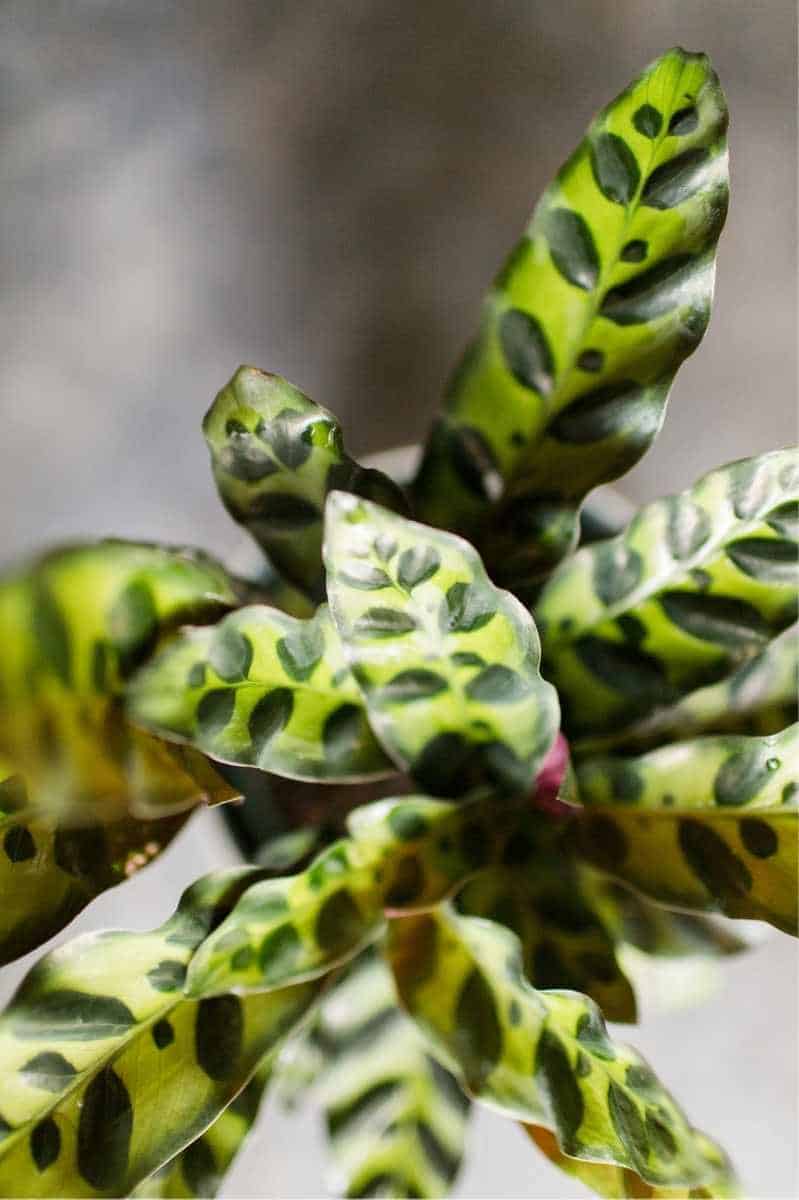
Calathea can be particular about the quality of their water. Hard water, soft water, or water with fluoride can all make those beautiful wavy leaves burn or brown. Instead, use distilled water, collected rainwater, or filtered tap water that has been sitting on the counter for 24 hours (leaving it to sit out lets the chlorine evaporate, which will make for happier calathea).
Growfully Protip
Calathea are used to the warmth of rainforests, so be sure to use room temperature water for your plants, not cold.
How often should you water rattlesnake plants?
Even though calathea lancifolia loves moisture, it doesn’t like to be soaked. Wait to water until the top inch of soil is dry.
Growfully Protip
Too much water will leave your plant’s roots sitting in water, which can quickly lead to root rot.
When it is time to water, check the soil—if it feels compacted and you can’t easily poke a finger into it, use a wooden chopstick to gently poke holes in the potting medium. This will aerate the soil and allow air and water to get to all parts of the roots. Slowly pour water over the surface of the soil, until you see some coming out of the drainage hole.

Why does my rattlesnake plant move?
Like other marantaceae plants, the calathea lancifolia closes up its lance-shaped leaves when it is dark out, and unfolds them again when the sun rises. If you watch your rattlesnake plant closely as night approaches, you’ll see its leaves slowly lifting. Some people even claim they can hear a soft rattling sound coming from their plant when this happens!
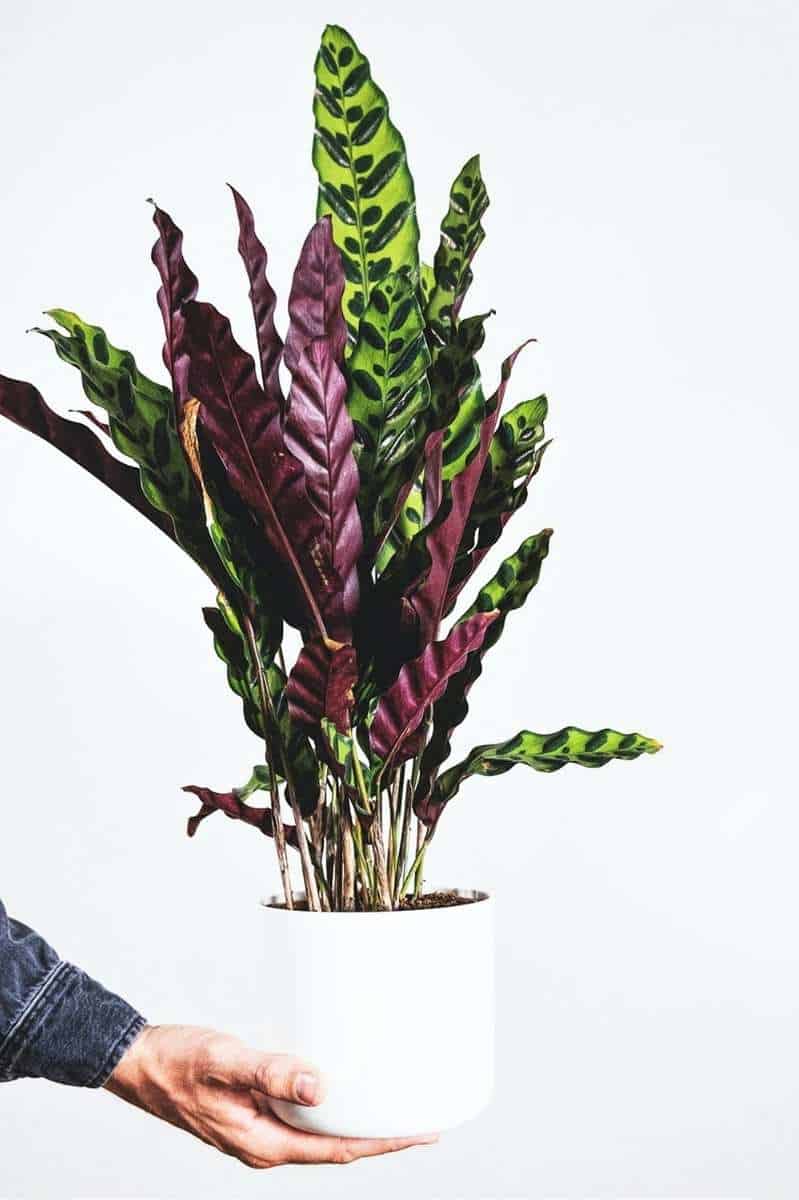
How big do rattlesnake plants get?
With the right care and enough time, the calathea lancifolia can grow up to 30″ tall.
Are rattlesnake plants toxic to cats or dogs?
According to the ASPCA, calathea are not toxic to pets.
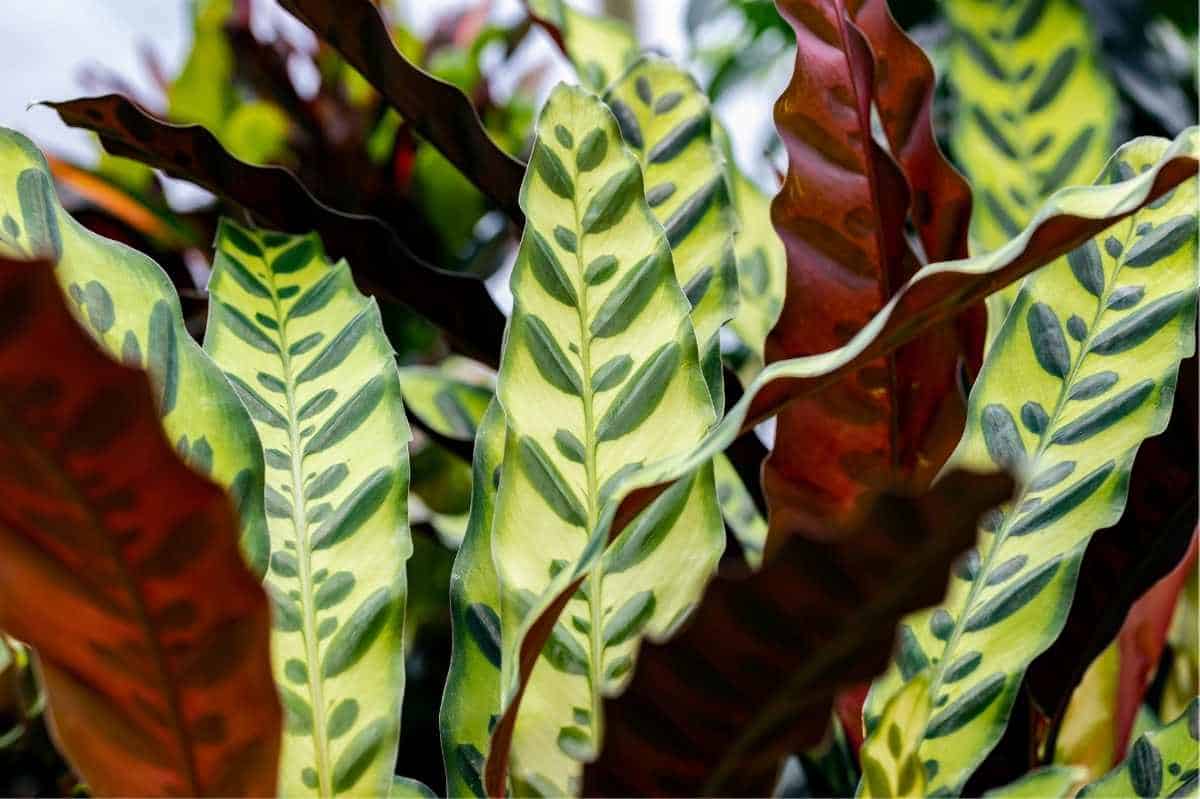
Troubleshooting
Is your rattlesnake plant looking a little sad? Make sure you are meeting all its care needs, and then head on over to our calathea care guide for more troubleshooting advice.
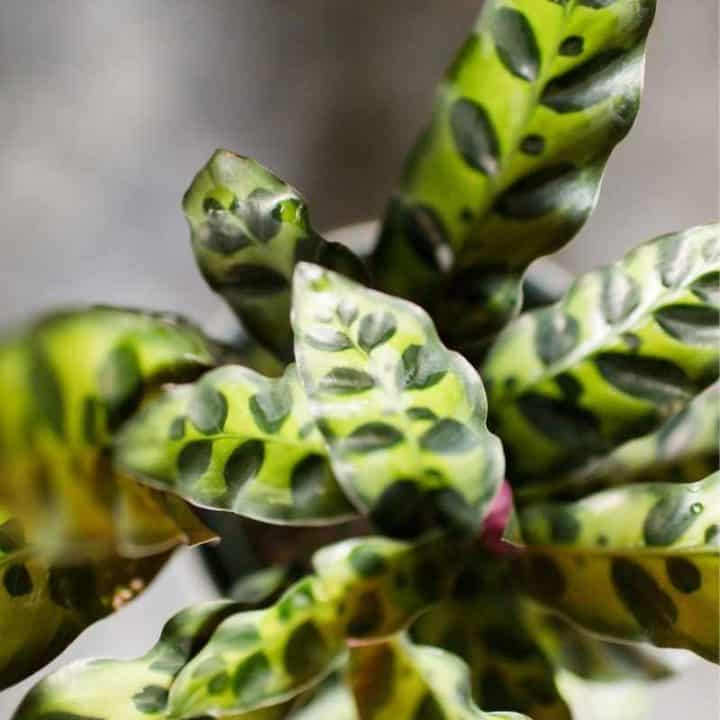
Rattlesnake Plant Care Guide
An often overlooked houseplant, the rattlesnake plant (Calathea Lancifolia) can be a fantastic addition to any home. Learn everything you need to know about caring for this animal-friendly plant.
Materials
- Calathea Lancifolia (Rattlesnake Plant)
- Well-draining potting medium
Tools
- Container with a drainage hole
- Mister bottle (optional)
Instructions
- Place in indirect light. Direct sunlight will bleach and burn the leaves, so keep your rattlesnake plant in indirect light.
- Water well. Calathea like consistently damp, but not soaking wet, soil. Water when the top inch of the soil is dry.
- Boost the humidity. Calathea thrive on humidity. Group your plants together, or use a pebble tray or humidifier, to raise the humidity around your rattlesnake plant.








Hi Cassie,
Your ‘print’ link does not work.
Hi Carolynn, It seems to be working again! Thanks for the heads up!